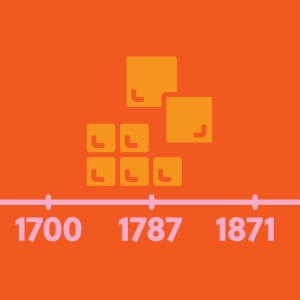 Mendeleev (Historical)
Mendeleev (Historical)
In 1869 the Russian chemist D. I. Mendeleev discovered that pure chemical elements (containing a single kind of atom) could be classified in a table, in families, according to the number of protons in their nuclei. This number, called the atomic number, increases from top to bottom and from left to right on this table. The elements arranged in the same column have similar chemical properties.
This animation shows which elements were known at different periods of history:
- 1700 (the death of Boyle)
- 1787 (Lavoisier)
- 1871 (Mendeleev)
- At the present time
Select the time-period you want to select.
Click an element to read its name.
